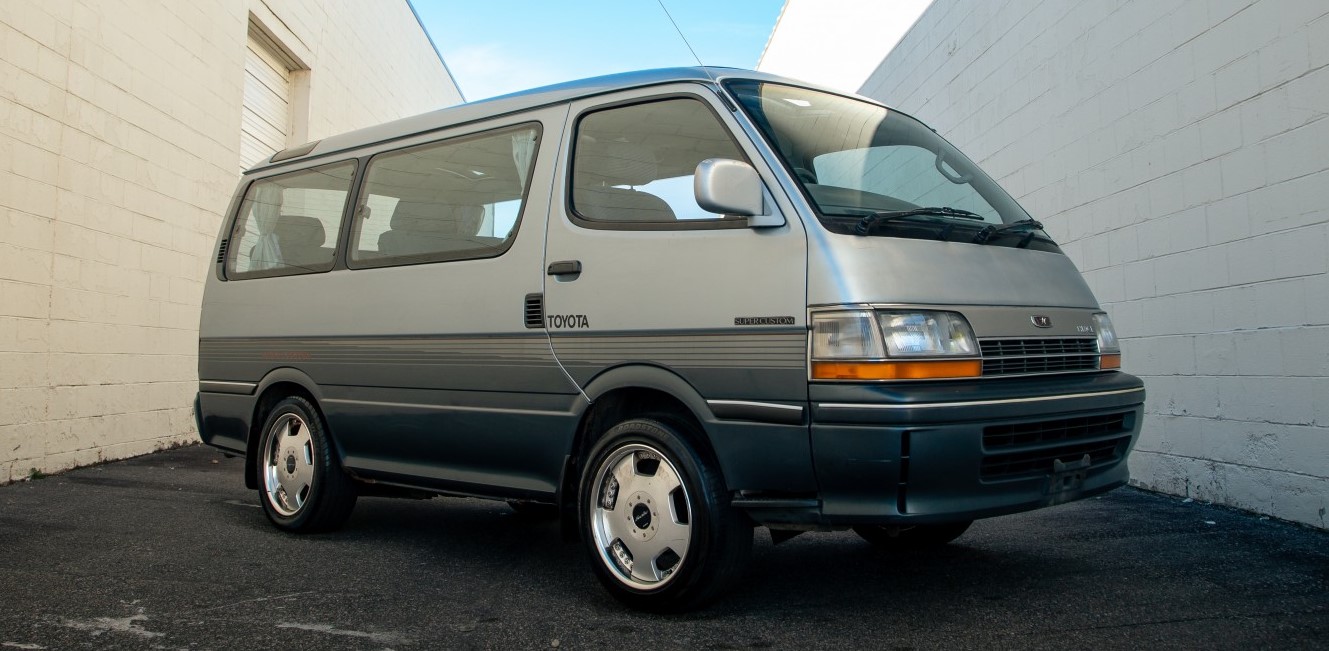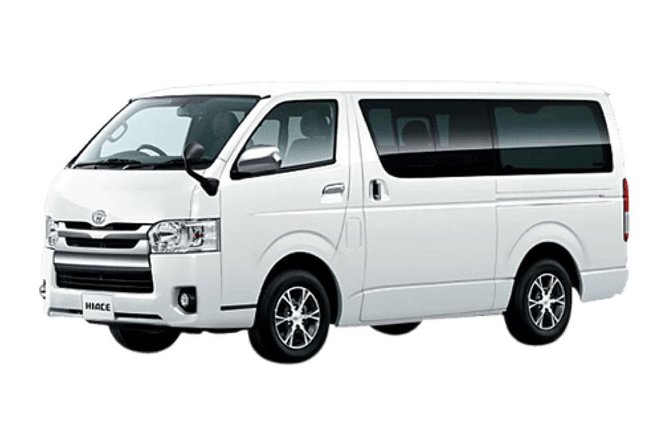Stock
How To Buy
About Us
The Toyota HiAce is a legendary workhorse, famous for its durability and versatility. Across Africa, Asia and indeed the world, this 1-box multipurpose vehicle is known for never quitting. Many owners report it clearing 250,000 km with no fuss, and many have been on the road so long they have outlived all other models of their year.
The HiAce’s trademark “squared off” body type optimizes interior space, letting you carry everything and everyone you need.
The fifth and current generation is available in 2 Long Wheelbase (LWB) and 2 Super Long Wheelbase (SLWB) models. The LWB Van is the ideal utility vehicle and mobile office, while the LWB Crew Van features dual sliding doors and a second row bench for moving extra people. Those who need more space can choose the SLWB Van with panels for hauling big loads or the SLWB Commuter Bus with backseat windows, which seats 12-14 people comfortably. The HiAce is available in both economy (DX) and luxury (GL) configurations.
The HiAce recently received a four-star safety rating from the Australasian New Car Assessment Program (ANCAP).
Toyota HiAce Model Years
The Toyota HiAce was first launched in 1967 and spans five generations, but the models you’ll be shopping for will almost certainly hail from the last two.
The Fourth Generation: 1989 – 2004
HiAce vans manufactured from 1989 to 2004 are fourth generation models, which feature a range of engines (anywhere from 2.0 liter gasoline to 3.0 liter turbo diesel) and standard and long wheelbase variants. 2004 was the final production year for the fourth generation HiAce.
The Fifth Generation: 2005 – Present
The 2005 HiAce was the first of the fifth generation models, which are based on a version of the four-cylinder double overhead camshaft (DOHC) engine, and offered in wide long wheelbase, super long wheelbase, long wheelbase and wide super long wheelbase variants.
Understanding HiAce features
Fuel Type
- Diesel
- Gasoline
Transmission
- 4AT
- 6AT
- 5MT
When looking at a HiAce’s transmission type, you will see designations like “4AT”.
The number at the front refers to the number of forward gear ratios (ex. a 4AT transmission has four forward gear ratios). The letters refer to the transmission type.
There are three types of transmissions you will see offered for HiAce models.
Automatic
“AT” means the vehicle has an automatic transmission. The numbers behind “AT” refer to the generation, or version of the automatic transmission – with a higher number indicating a more recent offering – ex. AT 3.0 (third generation automatic transmission). In automatic transmissions, the vehicle’s gear ratio automatically changes while driving.
Auto Manual (Tiptonic)
“6AT” means the vehicle has an auto manual transmission, also known as a “Tiptonic” or “manumatic” transmission. In auto manual transmissions, the driver has normal automatic functionality as well as a manual mode. The manual mode allows the driver to upshift/downshift gears, overriding the car’s automatic system.
Manual
“MT” means the vehicle has a manual transmission. The numbers behind “MT” refer to the generation, or version of the automatic transmission – with a higher number indicating a more recent offering – ex. MT 2.0 (second generation manual transmission). In manual transmissions, the driver shifts gears manually with the gearshift.
Displacement
- 1998
- 2693
- 2982
“Displacement” describes the amount of air that is displaced by an engine’s pistons. It is generally measured in cubic centimeters (cc). A larger engine displacement tends to mean more power, while a lower engine displacement tends to mean better fuel economy.
Doors
The HiAce is available in 4 and 5 door configurations.
Features
- PASS
- “PASS” is short for passengers. The numerical value in front of the word refers to the number of passengers who can be carried, ex. a “3PASS” vehicle carries 3 passengers.
- DOOR
- “DOOR” refers to the number of doors, ex. 5DOOR means the vehicle has 5 doors.
- 4WD
- Stands for four-wheel drive. All four tires have power supplied to them by the transmission system, giving better traction in rough terrain.
Roof
- High Roof
- Roof space extends above the top of the front windshield, allowing for the maximum in extra storage and headroom.
- Middle Roof
- Roof space allows extra storage and headroom, striking a balance between economy and storage.
- Normal Roof
- Roof space is squared-off at the top of the front windshield to economize space.
Body
- Long wheelbase model (LWB)
- Long Wheelbase models offer a good combination of space and economy.
- Super long wheelbase (SLWB)
- The Super Long Wheelbase models offer a longer body and more space.
- Super Long Wide
- The Super Long Wide body type is longer and wider, allowing for the greatest amount of usable interior space of all HiAce models.
- Super Long
- Super Long models have a longer body, allowing for more space.
Floor
- Just Law
- Raised floor accommodating seats, allowing transport of passengers in middle and rear sections of vehicle
- Normal Floor
- Standard floor allowing for the transportation of cargo.
Badge
- DX
- The “deluxe” version has all of the vehicle’s standard utility features. This is the no-nonsense version of the HiAce that is commonly used for day-to-day hauling or passenger transportation.
- Super GL
- The luxury version of the HiAce. Current fifth-generation models feature a redesigned dashboard, smoother steering, upgraded switches and heated seats. This version of the HiAce is ideal for tasks like family errands or transporting corporate clients.
A HiAce for every occasion
So, in the end, it seems there’s about as many car feature terms as there are uses for the Toyota HiAce. We hope this guide will help you on the path to finding the right year and configuration for your business or personal needs.


